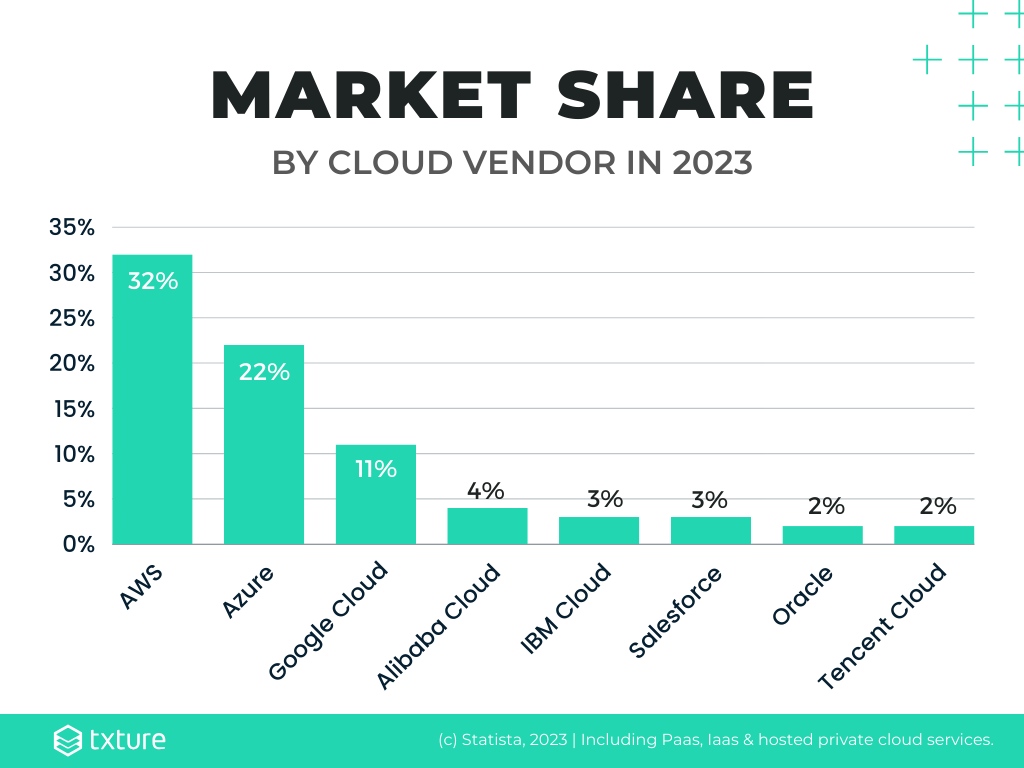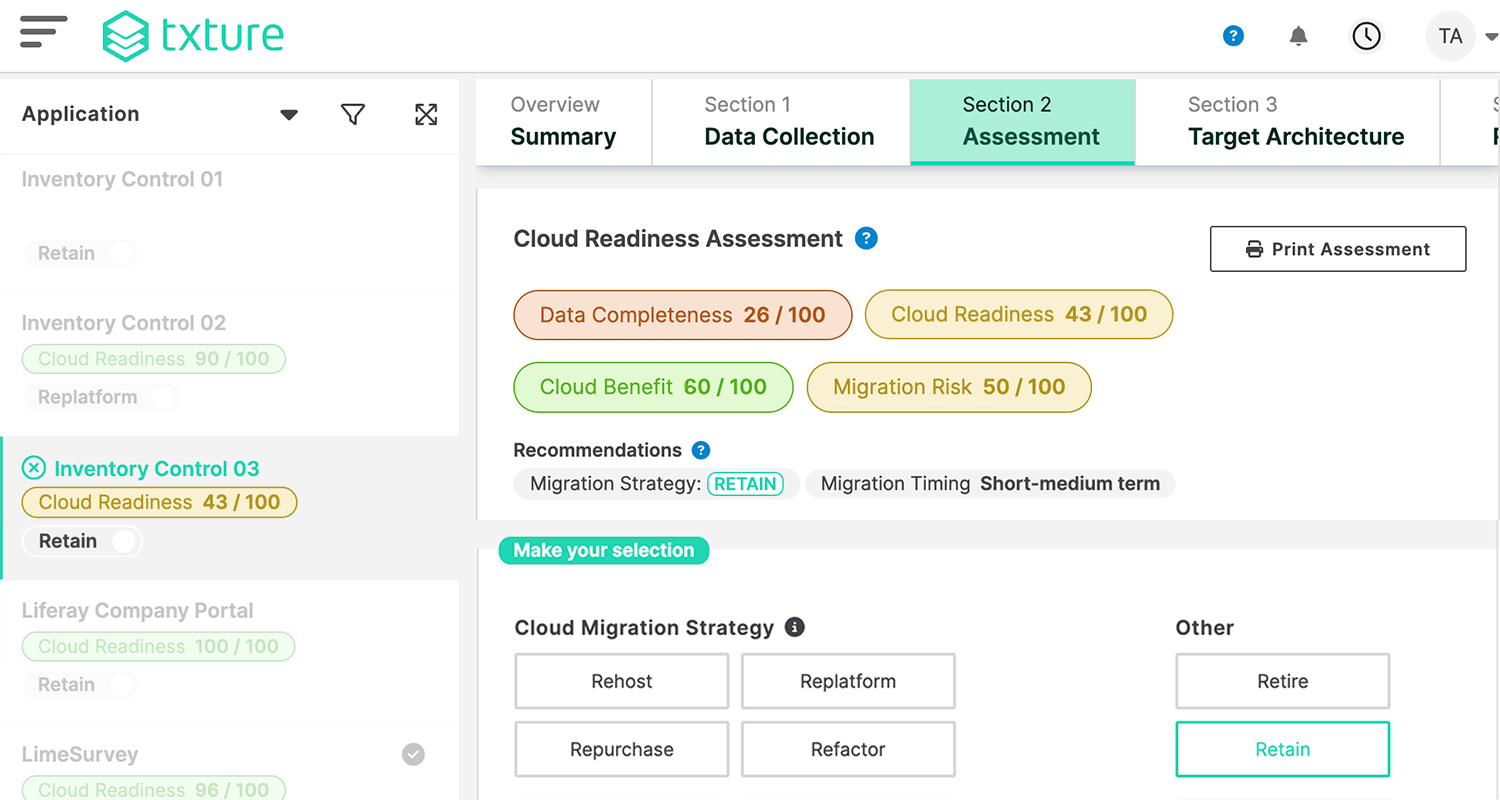The Strategic Imperative of Adopting a Cloud-First Strategy

Is “cloud-first” a real, global trend or just a buzzword? What does it mean to lead a company with a “cloud-first” approach and what are challenges to overcome? Why do companies do it in the first place? We will cover all that in the article - but let’s start with the basics first:
What is a “cloud-first” strategy?
"Cloud-first" is a strategic mindset guiding organizations to prioritize cloud solutions, from e.g. Microsoft Azure or Google Cloud, over traditional on-premises alternatives. This strategic choice positions cloud services as the preferred option for a diverse range of IT projects and initiatives."
 ⚠️ Disclaimer: If your organization chooses a cloud-first approach, it might not look as impressive as this first daylight on the clouds. But you shall be forever admired by secretly cloud-loving IT admins in conservative companies.
⚠️ Disclaimer: If your organization chooses a cloud-first approach, it might not look as impressive as this first daylight on the clouds. But you shall be forever admired by secretly cloud-loving IT admins in conservative companies.
Why do companies choose to go cloud-first?
Organizations adopt a "cloud-first" strategy for several compelling reasons, driven by the numerous advantages offered by cloud computing. We’ll briefly list the key reasons for organizations to go "cloud-first":
-
Scalability: Cloud services let organizations scale resources up or down based on demand.
-
Cost Efficiency: Cloud computing eliminates the capital expenses of setting up and maintaining physical infrastructure. Instead, the cloud providers handle all maintenance and updates of both hard- and software.
-
Flexibility and Agility: Cloud-first enables rapid deployment and flexibility, allowing organizations to adapt to changing business requirements.
-
Enhanced Security Measures: Cloud providers invest significantly in advanced security measures, meeting high compliance standards. Built-in backup and disaster recovery solutions ensure that data is safe at all times.
-
Collaboration and Accessibility: Cloud-based tools facilitate collaboration among remote teams, letting them access data and applications from anywhere.
 Don’t we all have that one colleague that makes “working remotely” look like way too much fun? 🙄 Well, that won’t get any better with #CloudFirst
Don’t we all have that one colleague that makes “working remotely” look like way too much fun? 🙄 Well, that won’t get any better with #CloudFirst
In summary, a "cloud-first" approach empowers organizations with the agility, scalability, cost-effectiveness, and innovation required to thrive in today's dynamic and competitive business environment.
⭐ Famous brands that fully rely on a cloud-first approach are Netflix, Airbnb, Spotify or Uber. But you don’t have to be a digital giant to benefit from adopting the cloud-first strategy.
Navigating the Cloud Landscape: Services & Vendors
The cloud universe is a complex one: While 65% of the market share are distributed among AWS, Azure and Google Cloud, many other providers (like Alibaba, IMB, Salesforce, Oracle, or Tencent) offer their services to customers. Now, picking the right cloud vendor and cloud computing model is like building your company’s digital toolbox.
- Do you need flexible and scalable infrastructure power? Turn to Infrastructure as a Service (IaaS).
- Want a ready-made platform for your project without the need to manage the underlying infrastructure yourself anymore? That's Platform as a Service (PaaS).
- Just need to run software without the hassle? Software as a Service (SaaS) is your service model.
It's all about tailoring your cloud choices to fit the job, making sure your cloud (transformation) journey is not just smooth but also meets your goals. Want to read more? Check out our article on the top 5 criteria for choosing a cloud service provider.
 AWS holds nearly one third of the entire cloud computing market, another third is served by Azure and Google Cloud. Many small players split the rest.
AWS holds nearly one third of the entire cloud computing market, another third is served by Azure and Google Cloud. Many small players split the rest.
What is the difference between “cloud-first” and “cloud-native”?
Find this confusing? You’re not alone. “Cloud-first” and “cloud-native” are both cloud computing strategies focussing on different aspects of the cloud adoption process.
- "Cloud-first" is a broader strategy guiding overall cloud adoption decisions
- "Cloud-native" specifically focuses on application architecture and development practices (how to build specific applications)
This table should help you understand the differences:
| Strategy | Cloud-First | Cloud-Native |
|---|---|---|
| Definition | "Cloud-first" is a strategic approach where organizations prioritize the use of cloud services and platforms when considering new IT initiatives. | "Cloud-native" refers to specifically designing and building applications to leverage the advantages of cloud computing. |
| Focus | It emphasizes the preference for cloud solutions over traditional on-premises alternatives. The decision-making process prioritizes cloud adoption as a default choice for various projects and initiatives. | It emphasizes creating and deploying applications that fully exploit the cloud environment's scalability, flexibility, and other inherent features. Cloud-native applications are typically modular, scalable, and designed to thrive in a dynamic, distributed cloud setting. |
Summed up, "cloud-first" is about the strategic preference for cloud solutions, while "cloud-native" is about optimizing the design and architecture of applications for the cloud environment. They complement each other. Read our recent blog article to learn more about cloud-native technologies.
Disadvantages & Challenges of “Cloud-First”
Not every application benefits from its “cloudification”. There is a set of limitations to the cloud-first approach you need to consider:
-
Regulatory Compliance: Some organizations may face regulatory issues to cloud data storage or specific management practices. Careful planning is vital to meet these requirements. Examples are privacy regulations, government security standards or industry-specific regulations in e.g. finance or healthcare.
-
Censorship and Data Access: Government-imposed internet restrictions may affect data accessibility, particularly for organizations operating internationally within specific clouds (e.g. regional blocking, data localization laws or selective content filtering).
-
Limited Bandwidth or High Latency Requirements: Using the public internet for cloud services can cause delays, especially for tasks like video calls or large data backups. Watch out for potential network slowdowns. Also, applications with very high latency requirements are often not suitable for migration to the cloud.
-
Cloud Cost Complexity: Cloud-first approaches can be cost-effective in a right-sized and cost-optimized cloud environment, but they require thorough cost analysis and precise utilization of cloud services to achieve actual savings.
These limitations to cloud-first adoption can’t be denied and you have to take them into account carefully. “Cloud-first” refers to a preference towards cloud-based, but of course leaves space for individual decisions on whether to migrate a specific application or not. Our transformation management software allows you to separately assess each application for its cloud benefit, evaluating specific migration risks and effort. This helps you select on a data-driven basis which application will benefit from a cloud migration and which should better be “retained” on-premises.
 Txture assesses the individual application’s cloud readiness, its cloud benefit and migration risk. If the risk is too high in comparison to benefit and readiness, Txture may suggest you to keep the application on-premises.
Txture assesses the individual application’s cloud readiness, its cloud benefit and migration risk. If the risk is too high in comparison to benefit and readiness, Txture may suggest you to keep the application on-premises.
Implementing your "Cloud-First" Strategy:
Venturing into a "cloud-first" strategy without professional help can be a big challenge. The first step should be the detailed assessment of your current IT infrastructure and identifying workloads suitable for the cloud. You should also consider the individual relevance of factors like scalability, security, and compliance.
Using technology specifically designed to simplify and manage the transformation process can be of great help. Txture's transformation software, the Application Transformation Cockpit, is a powerful tool designed to streamline the implementation of your "cloud-first" vision. With features like 6R app assessment, cloud solution architecture generation and migration planning, Txture ensures an efficient cloud migration. The software allows organizations to leverage the benefits of the cloud with ease and confidence. From initial planning to execution, Txture is your ally in bringing your version of a "cloud-first" strategy to life.
Conclusion: Your steps to “cloud-first”
So, at the end, we can say that "cloud-first" isn't just a buzzword, but a strategic change that will ensure organizations to meet the requirements of a digitalized world. Implementing a cloud-first policy requires backing from all levels within your organization. To learn how to rally everyone behind the goal of a cloud-based future, download our recent whitepaper:
What is certain is that you will have to invest both, time and effort, into properly understanding your IT landscape, assessing your applications and carefully crafting your future cloud estate. But apart from creating a future-proof business IT, you’ll be rewarded with significant benefits in scalability, cost efficiency, and security.
Our software solution serves a broad range of customers, from international consultancies and cloud providers to large multinational organizations. Reach out to our experts to showcase you how to leverage Txture for a smooth transition to the cloud and to unlock the full potential of a "cloud-first" approach.
Related posts
5.4.2024Generative AIHow to welcome Generative AI into your existing tech ecosystem2.4.2024
Generative AIPaving the way for leveraging Generative AI in your organization8.1.2024
Cloud Business CaseCreate a compelling business case for cloud migration with Txture18.12.2023
Cloud Success5 reasons why your cloud transformation is not successful (yet)29.11.2023
Cloud StrategyApplication rationalization - all you need to know
